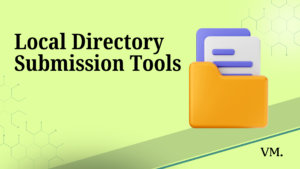Picture this: a potential customer is craving a delicious Italian meal. They grab their phone, open Google, and type in “best Italian restaurant near me”. What comes up? If your restaurant is in the area, you want to be at the top of that list. This is where local SEO strategies become your secret ingredient to attracting more customers.
In today’s digital age, simply having a website isn’t enough. You need a strong online presence that uses local SEO strategies to target your neighborhood. Why? Search Engine Roundtable found that 46% of all Google searches have “local intent.” People aren’t just browsing; they’re searching for products and services nearby.
The Building Blocks of Local SEO
This isn’t about flashy tricks. It’s about building a solid online presence that Google sees as reliable and relevant by using SEO ranking factors. Local businesses can improve their SEO rankings with a few simple tactics, here are the 11 most important:
1. Google Business Profile: Your Digital Storefront
Your Google Business Profile (GBP) is like your business card, storefront, and customer service hotline all in one. Google states that customers are 70% more likely to visit businesses with complete Business Profiles. You should learn how to optimize Google My Business because ithas a powerful local impact.
This free tool allows you to manage how your business appears on Google Search and Maps, making it one of the most important local SEO ranking factors.
To make your GBP work for you, follow these steps:
To make your GBP work for you, follow these steps:
- Claim Your Listing: If you haven’t already, claim your Google Business listing.
- Fill Out Every Nook and Cranny: Make sure every section of your profile is filled out completely. This means your business’s hours of operation, phone number, address, and website URL. This builds trust with search engines and customers.
- Choose the Right Categories: Categories are how Google determines which searches your business is relevant for. Take your time and select every relevant category. Don’t forget to add secondary categories. This gives Google a clearer picture of what you offer.
- Visuals Matter: Upload high-quality images that showcase your business, like photos of your products, storefront, team, or even customers enjoying your services.
- Embrace Reviews: GlobeNewswire found 95% of customers read online reviews before purchasing. Encourage happy customers to leave reviews. Respond to negative ones with understanding and professionalism.
2. NAP Citations: Consistency is Key
Imagine: you see an ad for a coffee shop, punch the address into your GPS, but end up at a parking lot. This is what happens when your business’s Name, Address, and Phone number (NAP) are inconsistent across online directories. These NAP citations are crucial signals to Google. They ensure consistency and accuracy about your business information online.
Here’s how to create consistent NAP citations:
- Double-Check Your Info: Before submitting your NAP citations, make sure your information is accurate on your website.
- Prioritize Quality Over Quantity: Focus on reputable online directories. Some popular options include Yelp, Apple Maps, Bing Places, Facebook, and your local Chamber of Commerce.
- Stay Consistent: Use the same formatting for your business name, address, and phone number across all platforms. Even minor discrepancies like “St.” versus “Street” can throw things off.
- Regular Audits Are Your Friend: Don’t let inconsistencies creep up on you. Regularly review your citations, either manually or using a tool like Whitespark, to ensure they’re accurate.
3. Online Reviews: Your Word-of-Mouth Marketing
Forbes found 60% of customers read online reviews before choosing a business. Online reviews are one of the most important ranking factors for local SEO.
Reviews act as powerful testimonials and heavily influence local rankings. A constant influx of positive reviews reassures Google that you’re the real deal. However, don’t be afraid of negative reviews. Think of them as a chance to showcase your customer service. Respond to these reviews with care and offer solutions.
4. Content that Resonates Locally
Crafting locally-focused content allows you to answer your audience’s questions and showcase what makes your business special. When creating local content, you should use relevant local keywords. These are words or phrases that people in your local community are searching for online. By incorporating them into your content, you increase your chances of showing up in their search results.
Here are a few ways to create locally-focused content:
- Hyperlocal Blog Posts: Write about events, news, and topics specific to your neighborhood. Are there any upcoming festivals or farmer’s markets? Share tips on parking or navigating your area.
- Neighborhood Guides: Compile a comprehensive guide highlighting hidden gems in your neighborhood. You can collaborate with local businesses to create cross-promotion opportunities.
- Customer Spotlights: Feature stories about how your business has positively impacted customers in your community.
5. Mobile-Friendly Design: Meet Your Customers on the Go
When was the last time you went a day without using your smartphone? With 61% of all Google searches happening on mobile devices, optimizing your website for these users is critical. “Near me” mobile searches also saw a 136% increase in the past year.
A slow-loading, clunky website will send potential customers to your competitors. Your website should provide a seamless experience on all devices. One of the most important on-page SEO factors for local businesses is optimizing for mobile.
Here are a few ways to make your website more mobile friendly:
- Use a responsive web design that automatically adjusts to different screen sizes.
- Optimize your images for faster loading times.
- Make sure your website’s navigation is easy to use on a smaller screen.
6. Local Link Building
Backlinks are links to your site from other websites. These links are a significant ranking factor, and that includes local SEO. The more high-quality local links pointing to your site, the more credible your business will appear to Google.
There are many different local link-building tactics you can use. Here are a few ideas to get you started:
- Get listed in local directories.
- Reach out to local businesses and offer to exchange links.
- Sponsor local events or organizations.
- Get involved in your local community and build relationships with other businesses.
7. Tracking and Auditing Your Progess
There are several ways you can track your local SEO efforts. You can track your Google Business Profile performance right in your account, or use SEO tool like Google Search Console. Google Search Console will show you how people are finding your website on Google Search.
8. Optimizing On-Page Elements
On-page SEO is critical for local ranking. Ensure your pages are optimized with location-based keywords in key elements.
Here’s how to optimize on-page elements:
- URLs: Include relevant location keywords in your URLs.
- Titles and Headers: Use location-based keywords in your page titles and headers.
- Meta Descriptions: Craft meta descriptions that include location keywords to attract local search traffic.
9. Creating Location-Specific Landing Pages
If your business operates in multiple locations, creating location-specific landing pages can improve local SEO.
To optimize location-specific pages:
- Unique Content: Ensure each page has unique content relevant to the specific location.
- Local Keywords: Incorporate location-based keywords for each page
10. Expanding Content with Local Focus
Enhancing your content with more local focus can attract local search traffic and engage your community.
Expand content with:
- Local Guides: Provide comprehensive guides about local attractions and services.
- Event Coverage: Write about local events and activities relevant to your audience.
- Neighborhood Spotlights: Feature local neighborhoods and their unique characteristics
11. Participating in Your Local Community
Active participation in your local community can enhance your business’s visibility and generate valuable local links.
To build local awareness and links:
- Engage with Local Organizations: Sponsor local events or participate in community activities.
- Collaborate with Local Businesses: Partner with local businesses for joint promotions or events.
How to Dominate Local SEO in 2024?
The digital landscape is constantly evolving, so staying ahead of the game is essential for your business’s growth. Embracing the right strategies is paramount to thriving in your community and attracting the right customers.
By combining a stellar Google Business Profile, consistent NAP citations, positive reviews, local content marketing, a mobile-friendly site, and local link building, your business will outrank the competition. These local SEO strategies will improve your online visibility. Your online presence is often the first impression you make, so put your best foot forward.
My Summary
Focus on creating helpful, location-specific content to succeed with local SEO. By leveraging a comprehensive approach—ranging from an optimized Google Business Profile and consistent NAP citations to effective review management and local link building—you can enhance your online visibility and attract more local customers.
Start implementing these strategies today to unlock your business’s local SEO potential.



